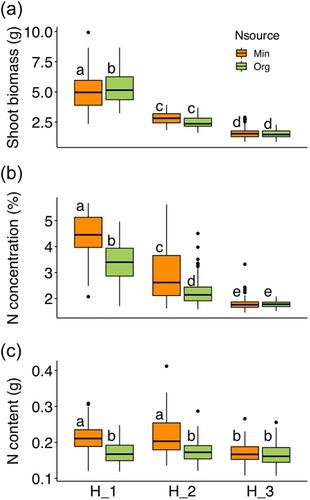Organic management and soil health promote nutrient use efficiency
Abstract
Introduction
Nitrogen is a key nutrient for plants. Often less than 50% of the applied nitrogen fertilisers is acquired by crops and nitrogen can be easily lost into the environment causing environmental pollution. Thus, to make agriculture more sustainable, it is important to investigate which factors determine nitrogen use efficiency (NUE). We investigated whether NUE was higher in organically managed soils compared to conventionally managed soils.
Materials and Methods
To test this, we carried out a pot experiment in a greenhouse using soils from 16 fields. The soils were collected from conventionally (eight fields) or organically managed fields (eight fields). In addition, plants received two different 15N enriched N sources (mineral 15N or an organic fertiliser source, namely 15N enriched plant litter). Plants were harvested at three time points, and growth and nitrogen uptake were assessed at each time point.
Results
NUE depended on management type and harvest time and the higher NUE of organically managed soils became more evident towards the second and third harvest. The average NUE at the end of the experiment was 93% and 55% for mineral fertiliser and litter application, respectively. This indicated that mineral fertilisers were immediately acquired by the plants, while nutrients in organic amendments had a lower availability and probably would be supplied later but steadier. Further, NUE was positively linked to microbial biomass, soil organic carbon content, and aggregate size, indicating that enhanced soil quality and soil health leads to a more efficient use of fertilisers.
Conclusion
Our results indicate that organic management and soil health promote a more efficient use of nutrients and contribute to a more sustainable agriculture.


 求助内容:
求助内容: 应助结果提醒方式:
应助结果提醒方式:


